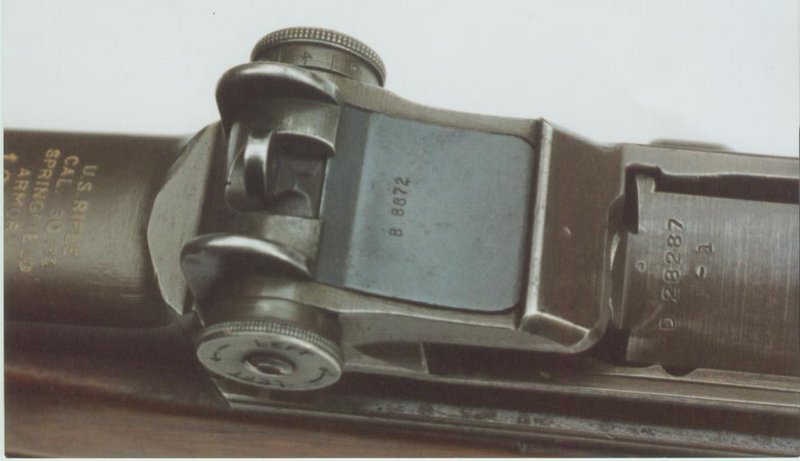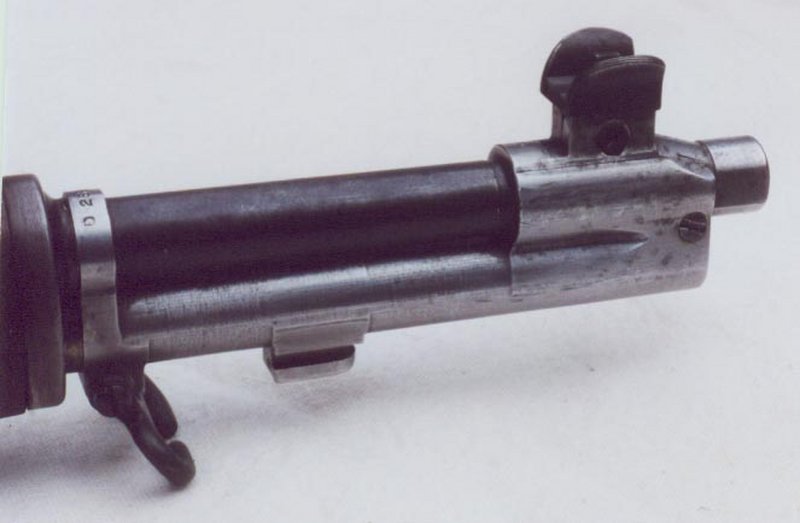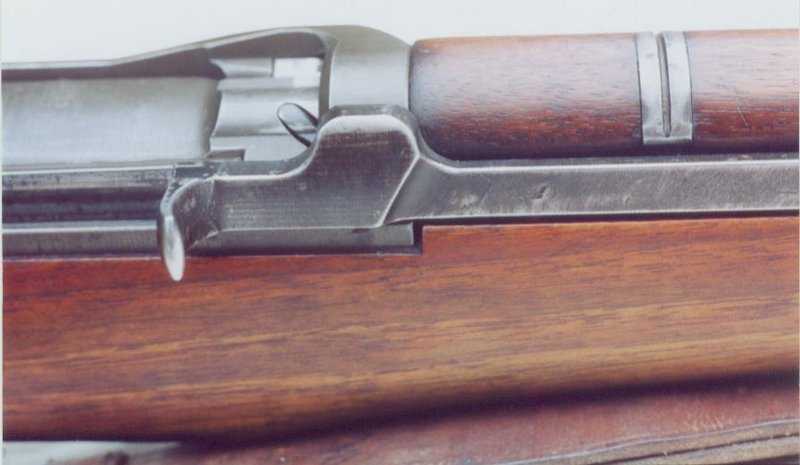Anyone got a Gas trap Garand? Ive heard about them being used during WWII and I want to know if they look any different than regular garands. Also, how much would an original go for?
Announcement
Collapse
No announcement yet.
Gas trap Garands
Collapse
X
-
Most of the gas traps out there are restorations. As early as 1941 Ordnance started converting the gas traps to gas port rifles. The few originals out there were either stolen or hidden away and not found until years later.
A few gas traps may have been used in WWII, but it would have been a small number. Production was only around 50,000 rifles.
This link will show a gas trap rifle.
http://www.collectorsfirearms.com/ad...p?itemID=23510
Comment
-
Josh, Actually they're one of those types of weapons that look pretty normal at first glance.....just another M1 with some funny parts at the front. But once you start to study them, you find that virtually ALL the parts are different than an M1 made only 2 or 3 years later.Originally posted by Josh Beckett View PostThanks a bunch. Man, if only I were to win the powerball. They dont really look any different than gas port ones other than the front sights.
Most of the parts, even small screws, have unique part numbers with dashes and variations marked on them unique to the early guns. Rear sights were "flush nut" type with fine checkering on the knobs, unlike the standard WWII lock bar style. All the wood parts had drawing numbers stamped in and, as you can see in the photos of the Texas gun, had a solid buttplate and no corresponding inletting for cleaning gear storage or hinge parts.
My rifle is in the 19,000 serial range and probably 20% of its parts have slightly different markings and features than the 36,000 SN gun in Texas. LOTS of little changes in those first 50,000 rifles.
The mainspring and guide assembly were also quite different with keystone shaped spring wire and a short rebound spring that was eliminated on later production. Original mainspring sets are scarce enough that they'll bring $1500+ by themselves for guys restoring gas trap rifles.
In total, they are very interesting rifles because of their unique parts and pieces, and mainly because the Army did such a thorough job of rounding them all up and eventually putting nearly all of them through the rebuild process. As Johnny said, the few original survivors (some estimates as low as 40-60 rifles) were "liberated", lost, or retained as samples at various Arsenals.
My example came from a gun show in Texas in the early 1960s and was in a friend's collection until I got it about 10 years ago. It was truly a once in a lifetime opportunity for an average collector like myself to acquire an example in completely original condition.



Comment
-
One of the best gun show stories involved a gas trap rifle, and I knew three of the people involved. About 15 years ago an older gentleman brought an M1 Rifle into a Little Rock, Arkansas gun show. He had been told that the rifle was worth $750, and that was what he wanted. Unable to get the $750 he finally sold the rifle for $500 to a collector I know. The collector then took the rifle to another part time dealer that I knew and traded it for a pistol and $500 (which means he got the pistol for free). The part time dealer later took the rifle to Houston and just as he was putting the rifle out, a New York dealer, Peter Cardone, came by and saw the rifle. In talking to Peter he related his side of the story. He ask the price of the rifle and though the seller said $12,500. He was going to give the dealer enough money to hold the rifle while he went back to his table to get the rest of the money, but before paying he ask the price of a Civil War carbine. Peter said at that time the seller told him "it's $1250 too, but if you buy both you can have them for $1200 each". Realizing that the seller said $1250 and not $12,500 he could hardly believe what he heard. Peter said he hated to take advantage of the seller, but that was the price he was made, and anyone else would have bought the rifle also. After Peter Cardone got the rifle the Houston show was abuzz with the news, with speculation about what the rifle was worth. I later saw the rifle in Tulsa, and it was as close to new as a military rifle could be. At that time Peter Cardone was asking $50,000.
The rifle changed hands several times, and is now owned by a collector I know.
Comment
-
This is a shot of a few of the parts numbered with the drawing number as well as another shot of the keystone springs. The letter at the first of the drawing number indicates the size of the piece of drafting paper the part is on, with A being the smallest and D being the largest. They were filed according to the drawing number, as this was before the days of computers, and everything was a hard copy. The dash and number at the end of some parts is the revision number.
The drawing numbers came into general use around 1935, but their use was scaled back during WWII as being another unnecessary manufacturing stop. The major parts continued to use the drawing number.

Comment
-
If you are talking about the early gas port rifle, yes. It was found at a small show about 20 years ago. I broke it down and when I found the keystone springs I wouldn't put it back on the table until the seller got around to me.Originally posted by Ronnie Fry View PostSo Johnny, is this YOUR rifle?? I'm dyin' to know !!
r
Not mint, but original.
Comment
-
Just wow....
Now ya guys just have the best rifles to take pics of. So unfair!
It's unbelievable that y'alls have survived that long in their original (or like he said, just minor changes) configurations. It's also hard to believe there's that few left that remain unchanged from those 50k! Kudos to those that have 'em! (under breath, lucky dogs! Haha!)
Apparently RIA will have one up for grabs in their upcoming auction.
Blue Skies of Thunderbolts,
Lev
Comment
Users Viewing this Thread
Collapse
There is currently 1 user online. 0 members and 1 guests.
Most users ever online was 10,032 at 08:13 PM on 09-28-2024.



Comment